ROLE: CG Artist
Venue:Harvard University
Cave Dance is the second project I have worked on since joining Harvard CAMLab. Based on the Dunhuang murals, Cave Dance is a modernized version of the Celestial Dance of Tang, combining motion capture and AI-generated algorithms. In the immersive images of the Celestial Dance, I sought to depict the Buddha of the Dunhuang culture dancing like ghosts and gods. The dancers are both real and imaginary, moving on the edge of the visible and invisible.
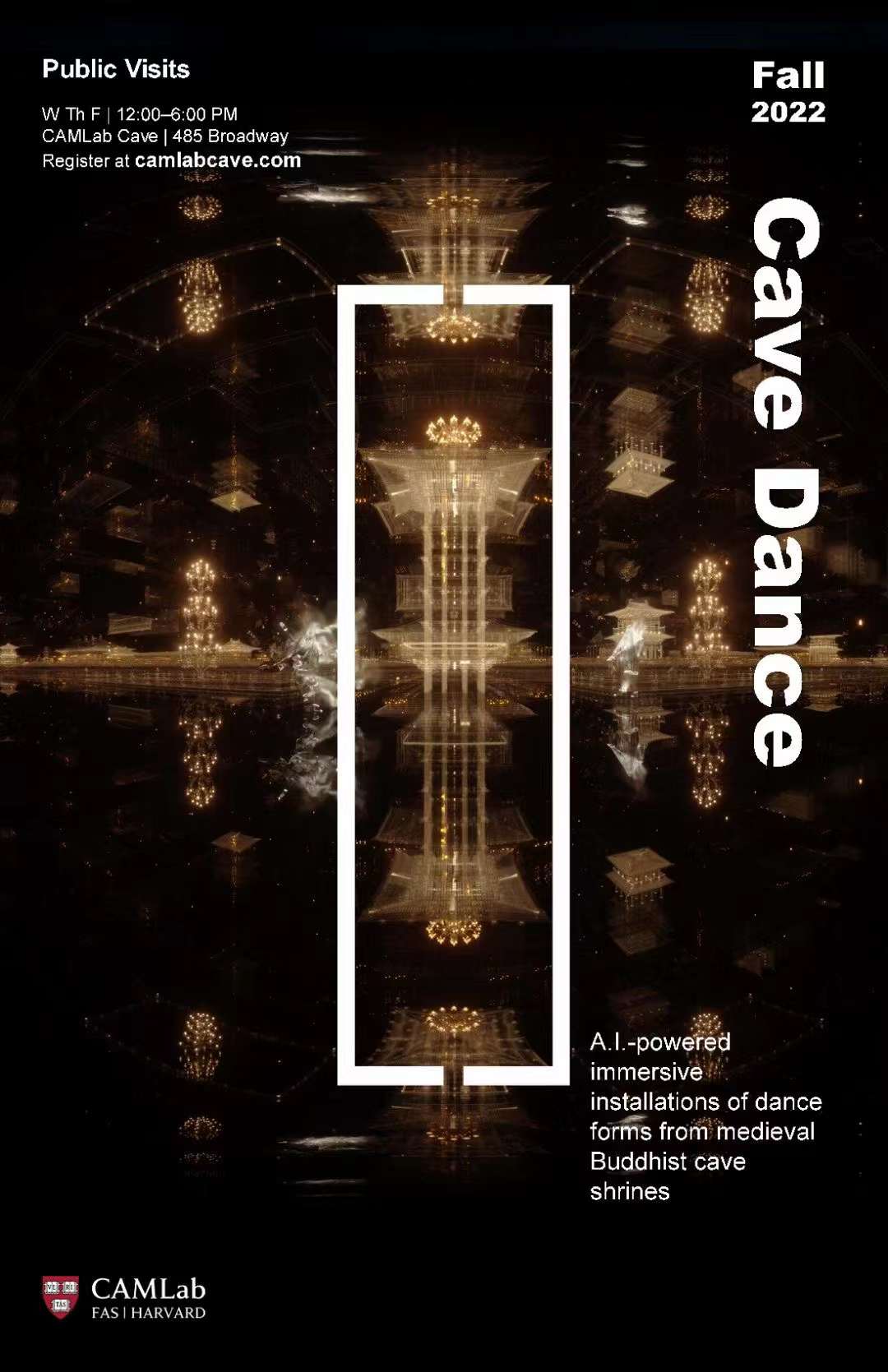


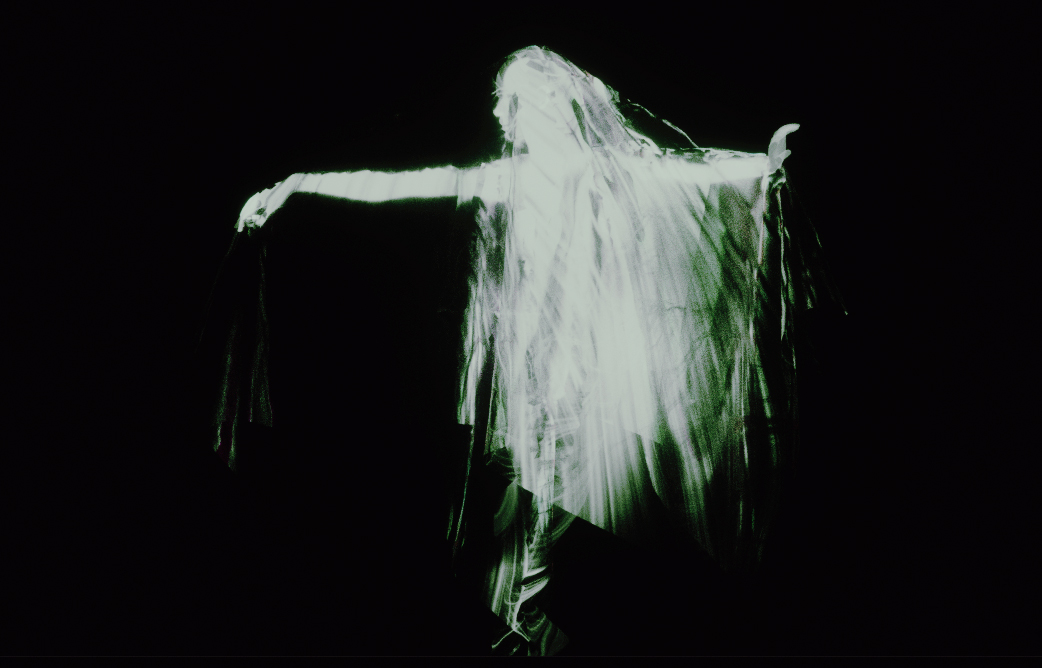



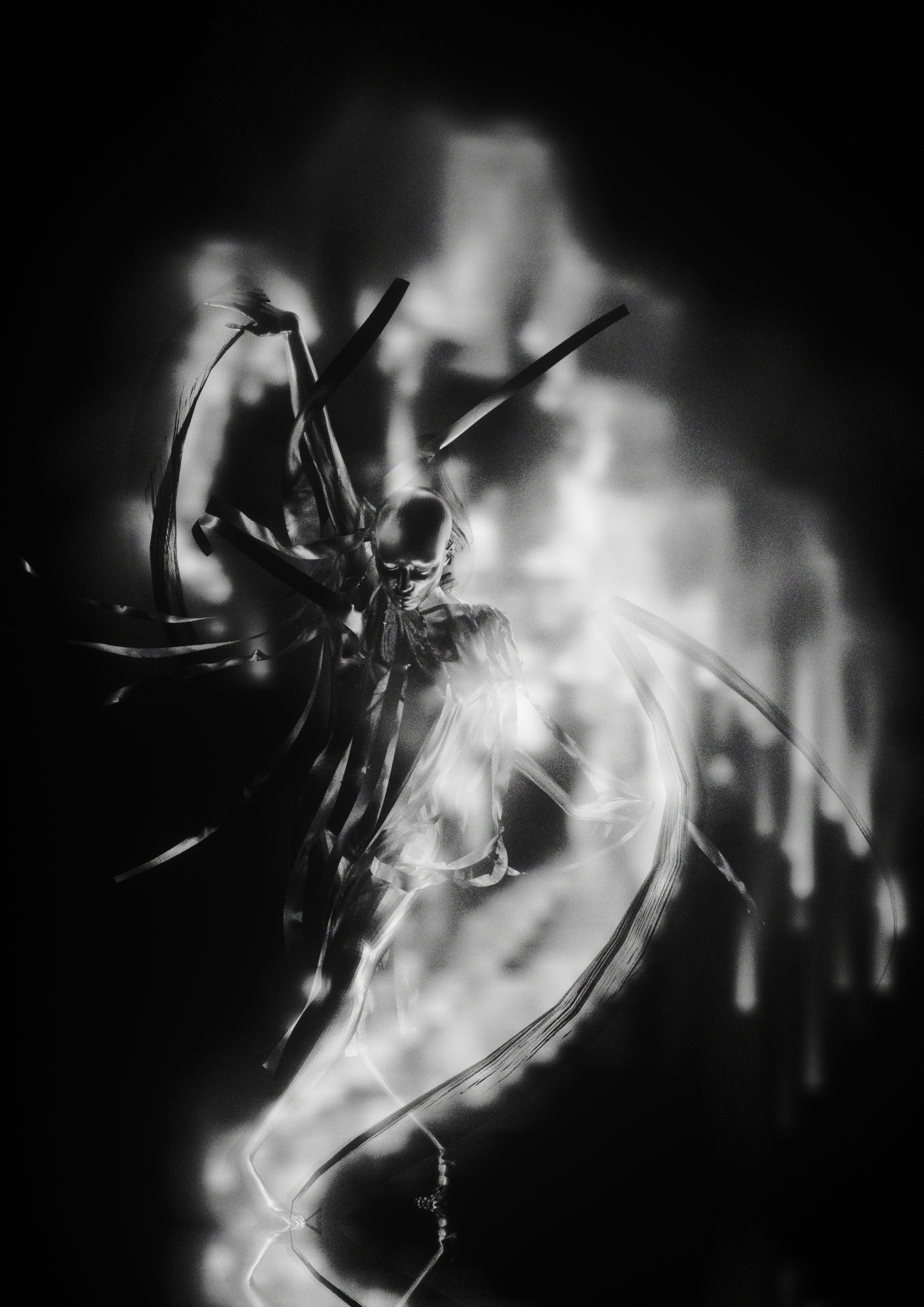
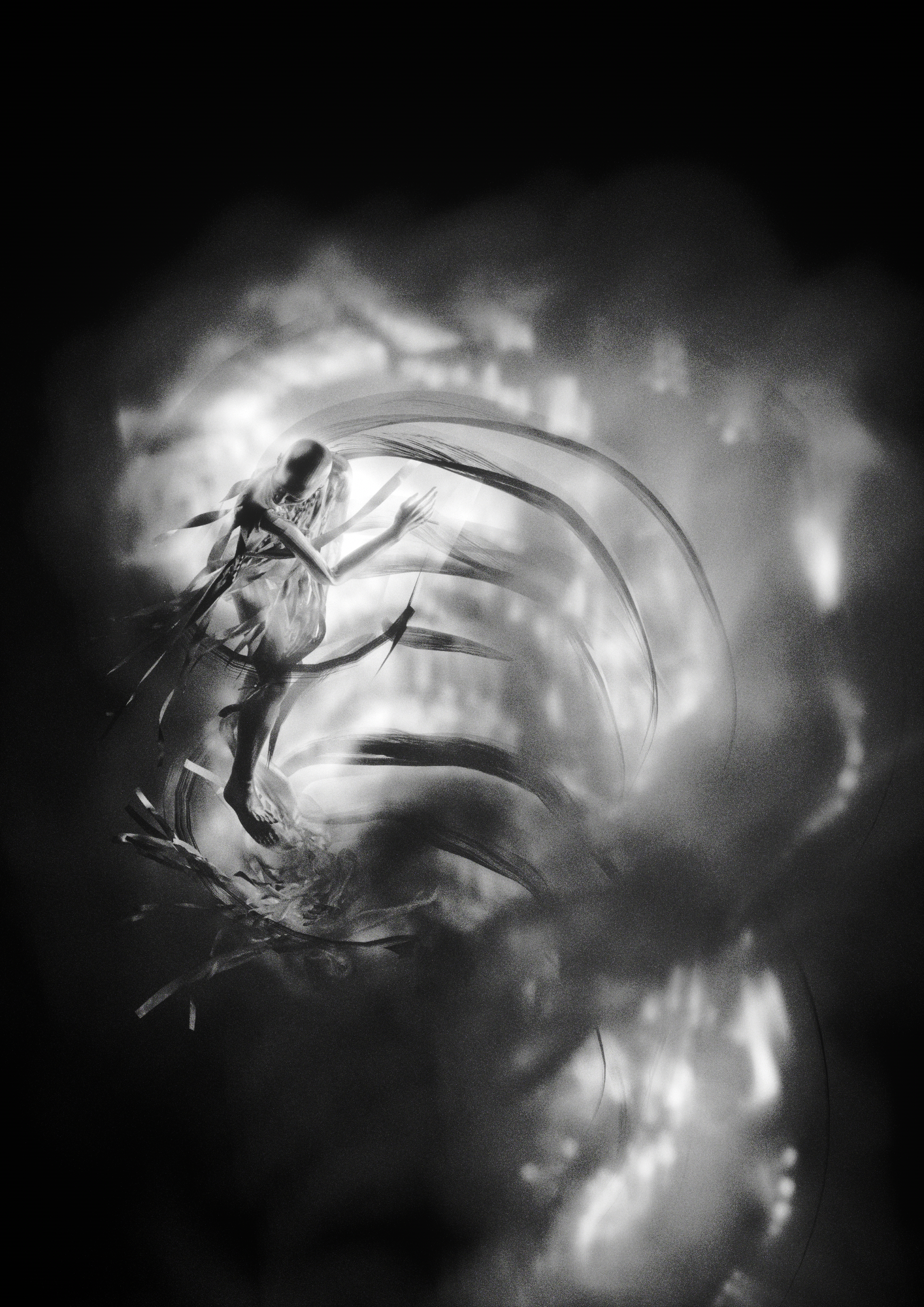

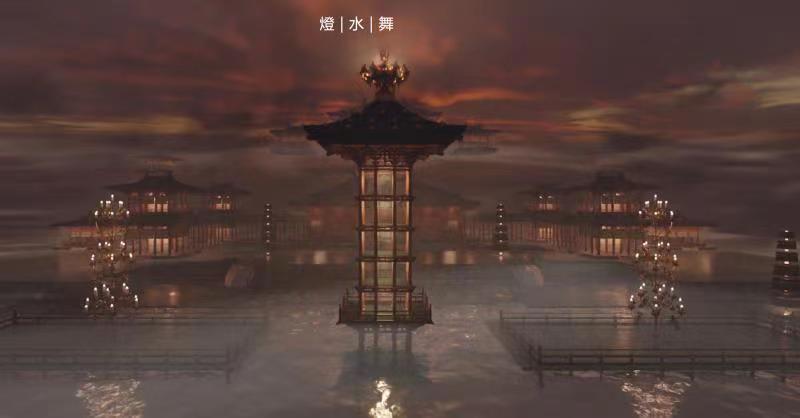


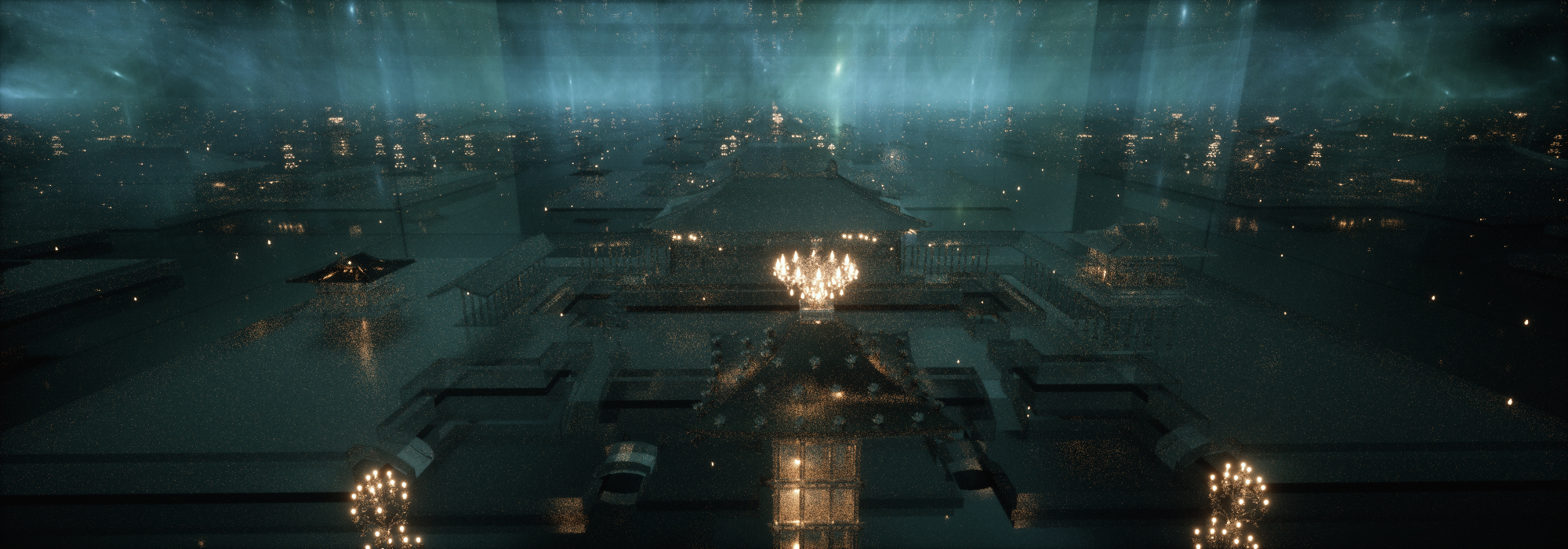




- TEAM DIRECTORS: Eugene Wang, Chenchen Lu
- PROJECT LEAD: Anna Borou Yu
- PROJECT MANAGER: Jiajian Min
- ACADEMIC CONSULTANT: Min Shi, Bo Shi
- TECH CONSULTANT: Huazhe Xu, Zeyu Wang, Renju Li
- PRODUCTION CONSULTANT: Jeff Grantz, Wenhua Shi, Oliver Radford, Sean Stewart
- ADMINISTRATION: Lorna Desiree Campos
- RESEARCH: Chenchen Lu, April Peng, Sophie Lei, Muyun Zhou, Ting-Ning Wen, Anna Borou Yu, Tiange Zhou, Xiaoyu Yang, Yanyue Li, Xiangyi Sun, Ziming Su, Icey Lin, Zhining Xia
- TECH RESEARCH: Anna Borou Yu, Chengan He, Jiashun Wang, Amo Zeng, Betty Wang, Junhua Liu, Angela Shen, Ningjing Tang, Diana Yue, Rachel Ai
- SCREENWRIGHT: Eugene Wang, Chenchen Lu
- CHOREOGRAPHY: Anna Borou Yu, Ting-Ning Wen, Yanyue Li, Xiangyi Sun
- PERFORMANCE: Anna Borou Yu, Ting-Ning Wen, Shuqi Cong, Teng Shi, Shumeng A, Qingyuan Hu, Hansong Wang
- VISUAL ARTIST LEAD: Curry Sicong Tian
- VISUAL ARTISTS: Jam Jianyu Mo(3d), Reraner Yetong Xin(3d), Amo Mengying Zeng(3d), Jake Xi Wang(3d), Haofan Liu(3d,TD), Du Ren (3d), Chao Zhou(3d), Erica Yuhan Song(3d)
- EDITING: Suki Yi Su, Curry Sicong Tian, Anna Borou Yu, Jiajian Min, Yihan Yin, Chenchen Lu, Ziming Su
- 3D DESIGN: Jiajian Min, Wenbo Xiang, Danlei Huang, Yingxuan Ma
- VISUAL DESIGN: Wanni Xu, Jianyu Zhang, Lily Li, Sijia Chen, Zhifei Xu, Jintong Duan
- LIVE ACTION: Fletcher Liujiyi Zuo, Jiajian Min, Shuyi Wang, Joseph Weingrad/ Xiuxing Wang
- SOUND DESIGN: Tiange Zhou, Leon Hangfeng Sun
- WEBSITE DESIGN: Chun Wang, Amo Zeng
- PUBLIC PROGRAM: Alina Yijia Yang, Elaine Yilin Huang, Sabrina Mingjia Chen
- EXHIBITION DESIGN: Jiajian Min, Anna Borou Yu
- EXHIBITION MANAGEMENT: Simone Levine, Jiajian Min
- EXHIBITION AV SYSTEM: dbpc (Dan and Ben Production Company)
- EXHIBITION INSTALLATION: DCL (Design Communications Ltd.), EPS Painting and Services
- MOTION CAPTURE: Beijing TenYoun 3D Technology Co., Ltd, The MIT.nano Immersion Lab, Barnard College Movement Lab
- TECH SUPPORT: Shujia Yun, Tianlin Yan, Bowei Li
- PROJECT LEAD: Anna Borou Yu
- PROJECT MANAGER: Jiajian Min
- ACADEMIC CONSULTANT: Min Shi, Bo Shi
- TECH CONSULTANT: Huazhe Xu, Zeyu Wang, Renju Li
- PRODUCTION CONSULTANT: Jeff Grantz, Wenhua Shi, Oliver Radford, Sean Stewart
- ADMINISTRATION: Lorna Desiree Campos
- RESEARCH: Chenchen Lu, April Peng, Sophie Lei, Muyun Zhou, Ting-Ning Wen, Anna Borou Yu, Tiange Zhou, Xiaoyu Yang, Yanyue Li, Xiangyi Sun, Ziming Su, Icey Lin, Zhining Xia
- TECH RESEARCH: Anna Borou Yu, Chengan He, Jiashun Wang, Amo Zeng, Betty Wang, Junhua Liu, Angela Shen, Ningjing Tang, Diana Yue, Rachel Ai
- SCREENWRIGHT: Eugene Wang, Chenchen Lu
- CHOREOGRAPHY: Anna Borou Yu, Ting-Ning Wen, Yanyue Li, Xiangyi Sun
- PERFORMANCE: Anna Borou Yu, Ting-Ning Wen, Shuqi Cong, Teng Shi, Shumeng A, Qingyuan Hu, Hansong Wang
- VISUAL ARTIST LEAD: Curry Sicong Tian
- VISUAL ARTISTS: Jam Jianyu Mo(3d), Reraner Yetong Xin(3d), Amo Mengying Zeng(3d), Jake Xi Wang(3d), Haofan Liu(3d,TD), Du Ren (3d), Chao Zhou(3d), Erica Yuhan Song(3d)
- EDITING: Suki Yi Su, Curry Sicong Tian, Anna Borou Yu, Jiajian Min, Yihan Yin, Chenchen Lu, Ziming Su
- 3D DESIGN: Jiajian Min, Wenbo Xiang, Danlei Huang, Yingxuan Ma
- VISUAL DESIGN: Wanni Xu, Jianyu Zhang, Lily Li, Sijia Chen, Zhifei Xu, Jintong Duan
- LIVE ACTION: Fletcher Liujiyi Zuo, Jiajian Min, Shuyi Wang, Joseph Weingrad/ Xiuxing Wang
- SOUND DESIGN: Tiange Zhou, Leon Hangfeng Sun
- WEBSITE DESIGN: Chun Wang, Amo Zeng
- PUBLIC PROGRAM: Alina Yijia Yang, Elaine Yilin Huang, Sabrina Mingjia Chen
- EXHIBITION DESIGN: Jiajian Min, Anna Borou Yu
- EXHIBITION MANAGEMENT: Simone Levine, Jiajian Min
- EXHIBITION AV SYSTEM: dbpc (Dan and Ben Production Company)
- EXHIBITION INSTALLATION: DCL (Design Communications Ltd.), EPS Painting and Services
- MOTION CAPTURE: Beijing TenYoun 3D Technology Co., Ltd, The MIT.nano Immersion Lab, Barnard College Movement Lab
- TECH SUPPORT: Shujia Yun, Tianlin Yan, Bowei Li